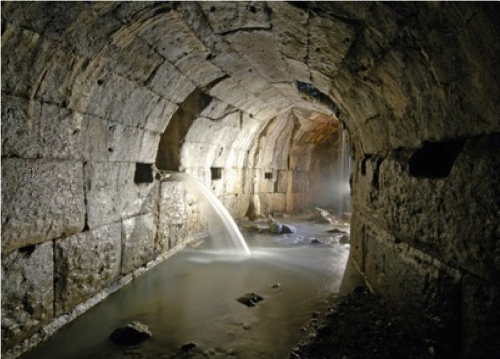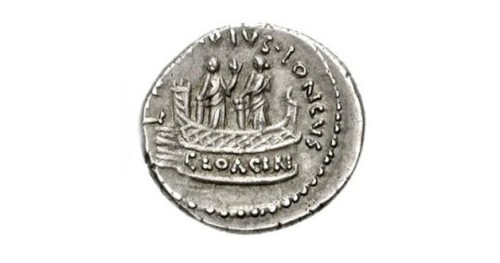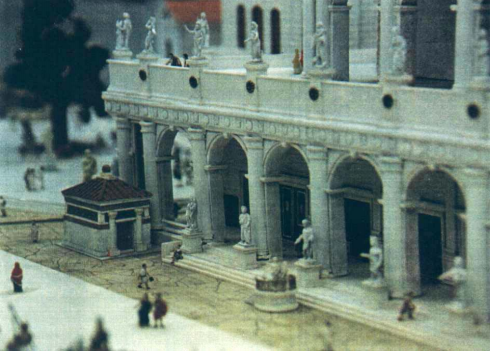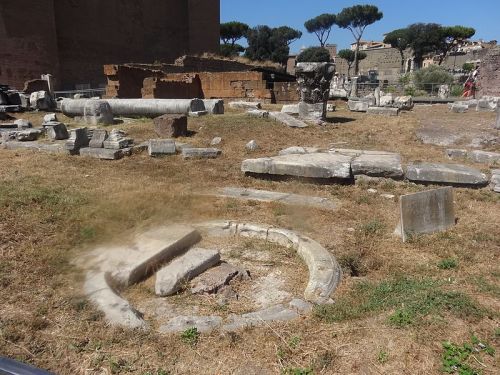Venus CloacinaWarning to the faint-hearted: etymology of a historical slang word for genitalia ahead
Venus CloacinaWarning to the faint-hearted: etymology of a historical slang word for genitalia ahead. Also, use of the word “shit”.The Etruscans were excellent engineers who developed hydrotechnology to provide wells, cisterns, irrigation, drainage and sewers. These underground tunnels were called cuniculi (singular: cuninculus), from the Ancient Greek κόνικλος (kóniklos) meaning “burrow”. And if you’re thinking that sounds like the word “cunt”, your’re right; I’ll get back to that in a moment.The Etruscans placed these highly important waterways under the protection of the goddess Cloacina. The goddess’ name seems to come from the root cluere, which originally meant “running water” or “stream” and came to mean “to cleanse or purify”. The Romans learned engineering from the Etruscans, and created underground drains to provide land for agriculture and building. They also created a great sewer to remove stormwater and sewage from the city of Rome. Like the Etruscans, the Romans were conscious of the importance of this infrastructure. They named it the Cloaca Maxima, the “great purifying stream”, and placed it under the protection of a goddess they called Venus Cloacina. As Starhawk pointed out in Dreaming the Dark, “Shit, death, and decay are part of life and, therefore, imbued with sacredness.”Religious syncetism, the blending of two ideas or deities, frequently occurred in ancient religions. In this case, the Romans associated the purview of the Etruscan goddess Cloacina (running water, purification) with the areas under the influence of Venus (sex and fertility - in which the vulva, or cunt, plays an important role, as does the phallus - though not necessarily with each other ∠( ᐛ 」∠)_ ). Thus Venus, with the addition of the epithet “Cloacina”, became a goddess of purification, and not just purification of the city from sewage, but also purifcation of the body from filth, and purification of the mind and soul from inappropriate desires. The purificatory aspect of Venus can also be seen in the Roman festival of Veneralia, which was established at the direction of the Sibylline Oracle in response to incidents of sexual impropriety by women in Rome. During the Veneralia, Venus was honored under the epithet Verticordia, “the changer of hearts”, an aspect of the goddess which encouraged Roman women to practice sexual conduct appropriate to their married or unmarried state. During the Venerealia, the cult statue of Venus Verticordia (now lost) was removed from her temple in Rome and taken to the baths. There, female attendants removed the goddess’ garments and personal ornaments to bathe and perfume her, and dress her in fresh garments and readorn her with jewelry. The statue was then arrayed with a festive crown and garlands of myrtle and roses, and returned to her temple for public rites. Those interested in love and marriage offered private prayers to Venus during the Veneralia in hopes of receiving those blessings.A Roman legend has it that, at some point during maintenance or extension of the Cloaca Maxima, a statue of a feminine form was found in the underground stream. It was hailed as Venus Cloacina and perhaps was one of the two statues enshrined at the Sacrum (shrine) of Venus Cloacina, which stood in the Forum over a drain leading into the Cloaca Maxima.It has often been said that the Roman built for eternity, and the Cloaca Maxima is not only one of the oldest sewer systems in the world, but it’s still in use! Partial list of sources:Bradley, Mark and Stow, Kenneth. Rome, Pollution and Propriety: Dirt, Disease and Hygiene in the Eternal City. Cambridge University Press, 2012.De Feo, Giovanni. (2013). “Minoan and Etruscan Hydro-Technologies.” Water. 5. 972-987. https://www.researchgate.net/publication/256103210_Minoan_and_Etruscan_Hydro-TechnologiesStarhawk. Dreaming the Dark. Boston: Beacon Press, 2012. Images: Rome’s cloaca Maxima (The great sewer, as it exists today) Diamond, Robert S. and Kassel, Brian G. A History of the Urban Underground Tunnel (4000 B.C.E. - 1900 C.E.) January 2018 Journal of Transportation Technologies 08(01):11-43. Image license: Creative Commons Attribution 4.0 International https://www.researchgate.net/publication/322185243_A_History_of_the_Urban_Underground_Tunnel_4000_BCE_-_1900_CE#pf20Two images of the “Shrine of Venus Cloacina” in the Forum Romanum from Hülsen, Christian (1906), The Roman Forum — Its History and Its Monuments, Ermanno Loescher & Co: Publishers to H. M. the Queen of Italy, pg 138. Image source: Wikimedia Commons (X). Image License: Public Domain (copyright has expired, eitherr because its first publication occurred prior to January 1, 1925, or due to lack of notice or renewal.)Denarius of L. Mussidius Longus, minted in Roma in 42 BCE. Image from the reverse side of the coin: Two statues of Venus Cloacina on platform with balustrade of the shrine of Venus Cloacina. Image source: CNG via Wikimedia Commons (X) Image license: Creative Commons Attribution-Share Alike 2.5 GenericModel of the Basilica Aemilia showing the Sacrum Cloacina in the foreground. Jon C. Schladweile. Cloacina: Goddess of the Sewers. sewerhistory.org. https://www.sewerhistory.org/articles/wh_era/cloacina/cloacina.pdfShrine of Venus Cloacina archaeological site Image source: Jordiferrer, 2016, via WIkimedia Commons (X). Image license: Creative Commons Attribution-Share Alike 4.0 International -- source link
Tumblr Blog : honorthegods.tumblr.com
#goddess: venus#ancient rome#goddess: cloacina#etruscan mythology#roman mythology#pagan#neo pagan#roman polytheism#religio romana#cultus deorum#disciplina etrusca#etruscan religion#cloaca maxima




